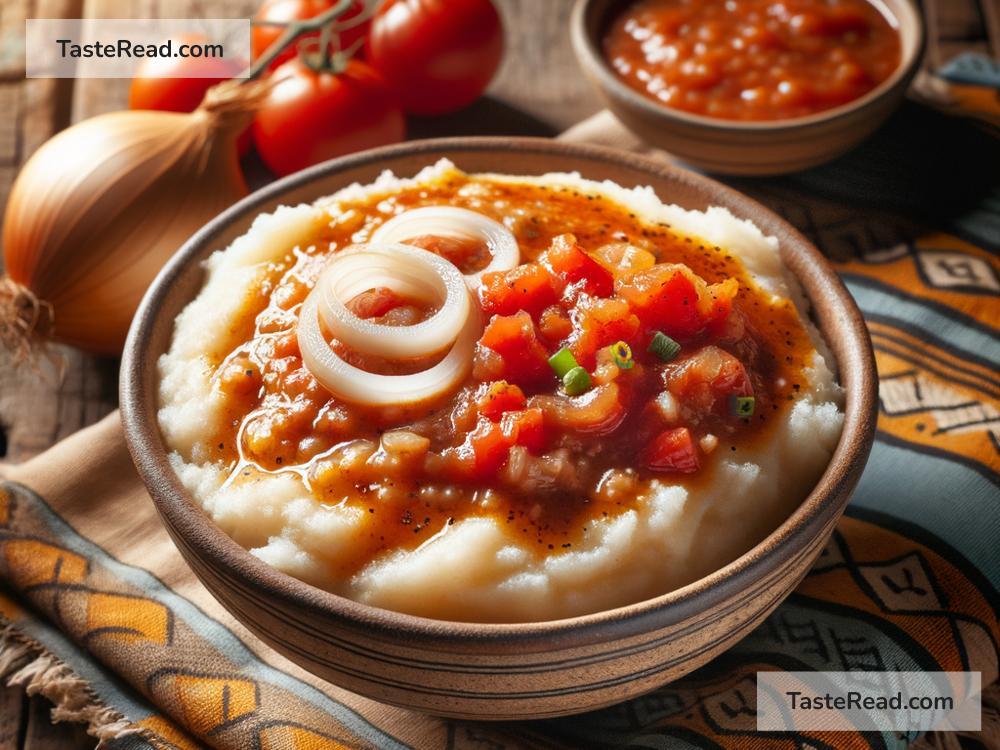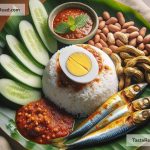Title: Journey Through Time: The Evolution of South African Pap
Nestled in the heart of South African culinary tradition is a humble dish that has woven its way through the nation’s history, adapting, evolving, and enduring through centuries. This dish is none other than “pap,” a simple yet profoundly symbolic staple food that tells the story of a country’s journey through time. Let’s embark on a fascinating exploration of how South African pap has evolved, reflecting the broader socio-cultural shifts of the nation.
Origins: The Roots of Pap
Our story begins long before the bustling cities and modern landscapes of today’s South Africa. The origins of pap can be traced back to the indigenous peoples of Southern Africa, who cultivated and harnessed the power of maize (corn) after its introduction to the continent from the Americas in the 16th century. Originally, the indigenous societies of Southern Africa consumed a precursor to today’s pap made from indigenous grains like sorghum and millet. However, maize soon became a staple, credited for its high yield and adaptability to various environments. This crop was ground into a coarse flour and combined with water, creating a porridge that was both nutritious and versatile — the early version of what would evolve into today’s pap.
Colonial Influences & The Diversification of Pap
As South Africa navigated the tumultuous waters of colonization and the influx of settlers in the 17th and 18th centuries, the culinary landscape began to shift. The settlers brought with them new farming techniques, but also an appetite for control and domination. Amid this cultural and economic upheaval, maize cultivation flourished, solidifying pap’s status as a dietary mainstay among both the indigenous populations and settlers. The food landscape was further diversified as Indian and Malaysian slaves and indentured laborers introduced spices and new cooking methods, subtly influencing the traditional preparation of pap and accompanying dishes.
Apartheid-Era South Africa & The Role of Pap
Fast forward to the 20th century, South Africa underwent one of its most challenging periods — the era of apartheid. During these times of division and struggle, pap stood as a symbol of resilience among oppressed communities. It was a dish that transcended socioeconomic boundaries, offering sustenance to those who were marginalized by the harsh realities of apartheid policies. Despite the adversities, pap remained a unifying comfort, adaptable to whatever little resources were available, demonstrating the indefatigable spirit of the South African people.
Modern Day: Pap in Contemporary South African Cuisine
Today, South Africa boasts a rich tapestry of cultures and tastes, and pap has not only endured but thrived, morphing into a variety of forms and flavors. It’s served in urban eateries and rural homes alike, celebrated in high-end restaurants and humble street food stalls. Pap can be found in the smooth, creamy texture of “stywe pap,” the firmer “krummelpap” perfect for soaking up rich, flavorful sauces, or the soft, spoonable “slappap.”
This culinary staple continues to accompany an array of traditional dishes, from the tangy and spicy chakalaka to succulent braaied (barbecued) meats. Its adaptability is its strength, making it a beloved side that complements a myriad of flavors, from the fiery to the subtle.
The Cultural Significance of Pap Today
Beyond its role in nourishment, pap carries deep cultural significance. It represents a shared heritage amongst South Africans, a reminder of their collective endurance through the trials of history. It’s a common thread that ties together the nation’s diverse cultures, a simple dish that encapsulates the essence of South African unity in diversity.
Celebrations and family gatherings often feature pap, underlining its role in fostering community and continuity of tradition. Moreover, pap has found its way into the heart of South African sports culture, being a go-to meal during rugby and soccer matches, embodying the communal spirit of the nation.
Conclusion: The Everlasting Legacy of Pap
As we’ve journeyed through the evolution of South African pap, it becomes clear that this isn’t just about the story of a dish. It’s about resilience, adaptation, and the unbreakable spirit of a nation. From its humble beginnings to its status today as a beloved national staple, pap has transcended its role as mere sustenance to become a symbol of South African identity and heritage.
In this journey, pap has shown that it is not only about the ingredients but the hands that prepare it and the mouths that savor it. It has been a silent witness to history, a comforter through hard times, and a joyous addition to celebrations. The evolution of South African pap reflects the country’s own transformation — a tale of endurance, diversity, and unity.


